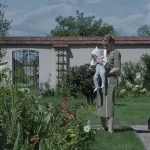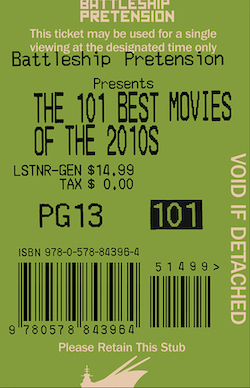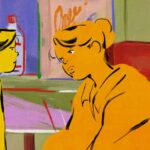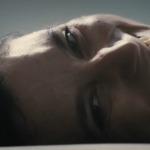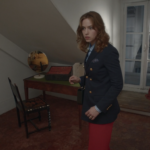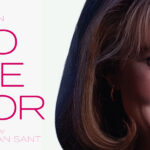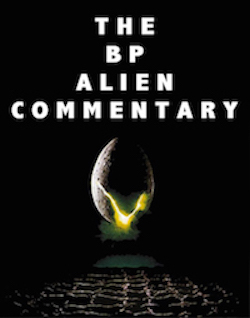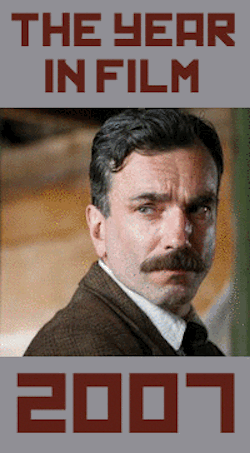Monday Movie: Purple Noon, by David Bax
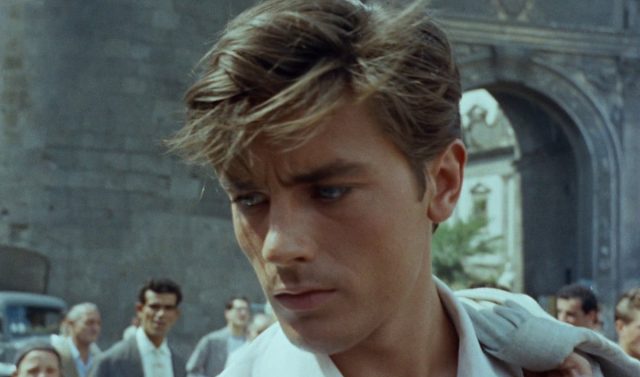
This article originally ran as part of a Home Video Hovel review.
Patricia Highsmith’s 1955 novel The Talented Mr. Ripley has proven to be potent fuel for artistic reinterpretation. It’s been adapted for film (twice), radio, television and the stage. A tale of Americans abroad in Europe, it manages to be both very American and very Continental. It’s a story about wealth, love, lust, murder, envy and at least a dozen other things. Its immediate appeal lies both in its function as a fantastical travelogue and in its salacious content. Yet there are layers beyond those that keep bringing people back to the source, layers that are eagerly and deliciously revealed by René Clément’s Purple Noon.
Tom Ripley (Alain Delon) has been offered $5,000 by the father of rich playboy Philippe Greenleaf (Maurice Ronet) to go to Italy and persuade his son to return to San Francisco. At the time we meet him, though, he seems to have become a close companion of Philippe, living and gallivanting with him at the hesitant disapproval of Philippe’s fiancée, Marge (Marie Laforêt). It soon becomes apparent, though, that Philippe has begun to tire of Tom, who is openly lying about his past in order to get closer to the aristocratic scion. Faced with the prospect of losing his tether to the life of carefree luxury to which he’s now become accustomed, Tom grows desperate. That point, about 45 minutes in, is where the plot really begins.
That’s not to imply that the long first section of the film is boring; quite the opposite, in fact. Delon and Ronet, give gripping, virile and insightful performances that both manage to simultaneously carom off the walls and remain single-mindedly focused on their characters’ inner lives. The brunt of the burden in these early scenes falls to Ronet. He has to make the viewer want to live in his world as much as Tom does. At the same time, he has to illustrate the reasons those in his orbit are as infatuated as they are infuriated by him. Ripley, meanwhile, is a largely passive character until his status begins to grow but Delon’s eyes, lips and posture leave no doubt about Tom’s desperation in clinging to Philippe as well as his torment – both profound and pitiable – at the notion of losing his tenuous connection to the man and his life.
Clément’s film – as in Anthony Minghella’s 1999 adaptation – puts its leads’ performances to good use by taking a slightly different approach from the source material. Highsmith’s novel is first and foremost an entry in the genre of suspense. Its chief concern appears at first to be the plot but it lets the souls of its characters seep up through the ground. Purple Noon brings the philosophical and moral struggles right to the front of the stage, occasionally becoming a more abstract thing in the service of its subjects’ minds.
This is achieved via a sumptuous visual strategy. Cinematographer Henri Decaë lays a blanket of warm, inviting, Italian sun over everything, often lingering on shorelines, piazzas and terraces, drinking in through the camera the undeniable beauty of the location. Then, when Ripley’s mind forces it to, that same camera becomes erratic, a sort of third-person subjective point of view. Ripley occasionally does terrible things. In the moments leading up to those instances, the film is as placid as the Mediterranean on a windless day. In the immediate aftermath, though, things become supremely difficult. He must struggle to keep a sailboat on course. Or carry a dead body down a flight of stairs. The implication is that the man’s rational brain is always a step behind his id.
As expressionistic as the apparatus itself can be, Clément also delivers clues within the frame. His mise en scène betrays not only an aesthete’s eye for detail but also the fact that more than mere money separates the haves from the have-nots. Philippe and Marge live in a large, beautiful house. Philippe owns a boat. They stay in fancy hotel rooms wherever they go. But it’s the little things that make a difference. The carrying case for a typewriter. A pair of white loafers. A cedar hanger. These are the accoutrements of wealth and, in the most subtle ways, we see that the characters interact with them in different ways, which is to say that Tom notices them while the others do not. They’ve never been without these things and they treat them with the same insouciance we would an undershirt or a plastic laundry basket. When Tom wears Philippe’s clothes, he looks different in them because he knows what they’re worth
What Tom also knows is that the ways of the rich are learned behaviors. If he can just continue to find a way to remain among them, he’ll grasp it all and be transformed. What he’s willing to do to get what he wants – and, more importantly, to keep the truth about himself hidden – is the source of the real drama. It’s also, perhaps, the reason people keep returning to The Talented Mr. Ripley. Most of us have lived lives that resemble Ripley’s more than Greenleaf’s. We may not consider ourselves wanton and shallow enough to do the things Tom does but we recognize the yearning for more and the embarrassment over what we lack. We wonder how close we would need to get to the life we desire for our own monsters to emerge.







